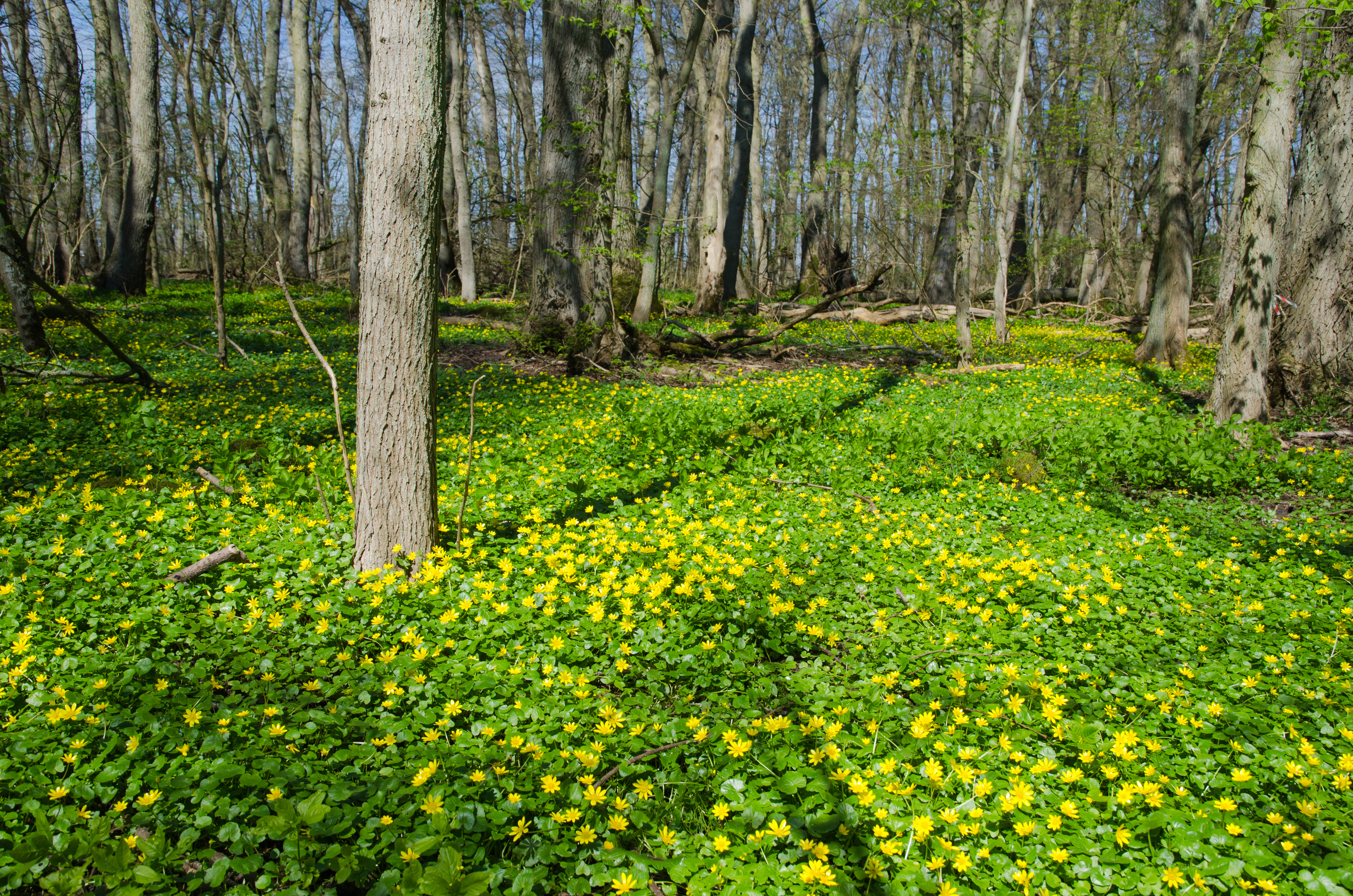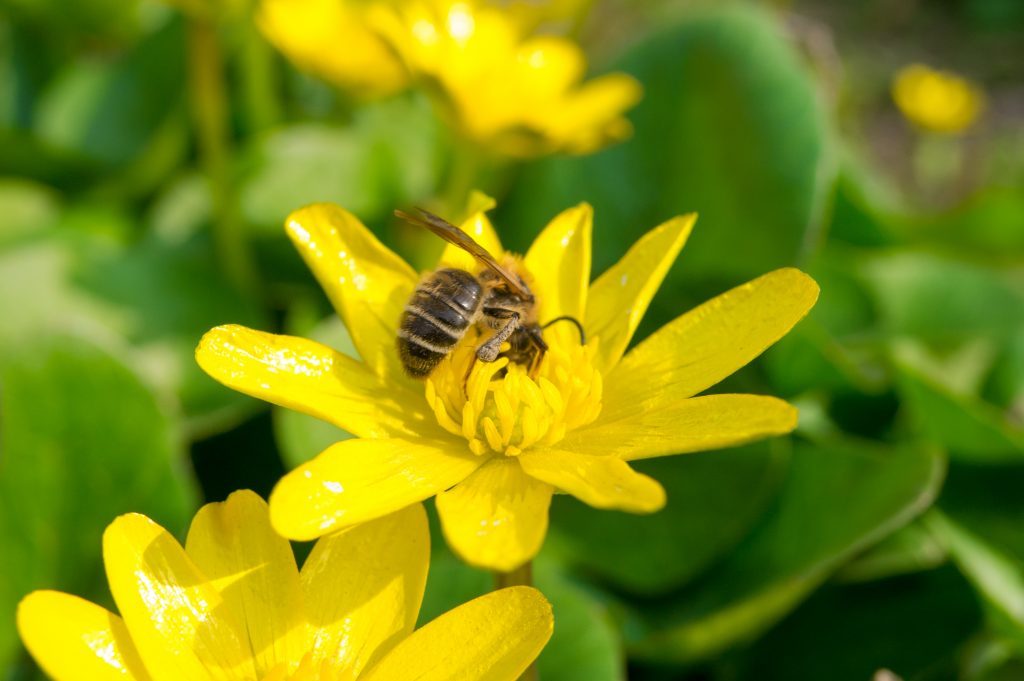This random yellow scattering of lesser celandines across the floor of my local wood have an irresistible appeal that draws me every April, especially since in among these sun-spangled flowers are drifts of pale-petalled wood anemones.
It is a soothing tonic of yellow upon white; hope and promise in this season of renewal.
But the day needs to be sunny to see these spring flowers in their full glory; visit when it is rainy or cold and the outlook is one of contrasting dreariness, with the petals of the multitude of brilliant flowers having closed-up like a thousand clenched fists. Or as William Wordsworth observed: There is a flower, the lesser celandine/That shrinks, like many more, from cold and rain/ And, the first moment the sun may shine/ Bright as the sun himself, ’tis out again!
They do so for a purpose, dry pollen is much easier for insects to transfer and closing the petals helps prevent dampness within the flower. These spring flowers are so important for early-emerging bumblebees and other nectar loving insects.
I saw a leech last week when searching for palmate newts in a small hill pond. My son, Ross, loved this place when he was younger, but sometimes when out pond dipping there would be a shriek of horror as the elongated form of a leech suddenly appeared near our bare feet.
In reality, there was no need to worry, for rather than being blood sucking leeches, these were horse leeches, which feed on small creatures such as midge larvae, tadpoles and worms.
Horse leeches are common around still water and can grow quite large. Yuck, you might say, but they are a harmless creatures and an essential component of life in our ponds and ditches. I have a sneaky regard for these leeches because they encouraged my son and his friends to talk about nature. For youngsters, the more ghoulish the creature, then the greater the interest.
There is another mysterious aquatic creature that I’m most keen to see again, but haven’t done so for many years. It is the brook lamprey, a small and primitive eel-like fish that haunts our rivers. For the most part, they remain hidden as slowly developing juveniles within the silt of river beds where they filter feed upon tiny organisms.
But come April and May, the metamorphosed adults miraculously appear, and in squirming balls of togetherness, they spawn in the gravelly shallows before dying. The only time I’ve ever witnessed this dramatic event was in a river in Midlothian some 25 years ago. These writhing fish, each one no more than 12cm long, were so engaged in their spawning frenzy that I could dip my hands in amongst them without a flicker of fear on their part.
It was all about being in the right place at the right time, and for me, probably a once in a lifetime nature encounter. But each spring I keep on looking and keep on hoping.
Info
Lampreys have sucker-like mouths, which most species use to parasitise upon the blood and flesh of other fish. However, the brook lamprey doesn’t feed in this way in the adult form; it just breeds and dies.











